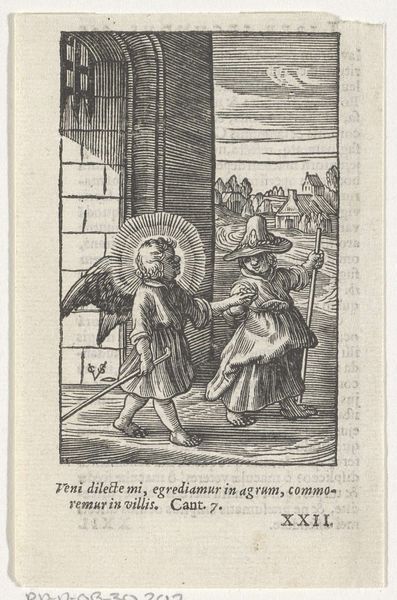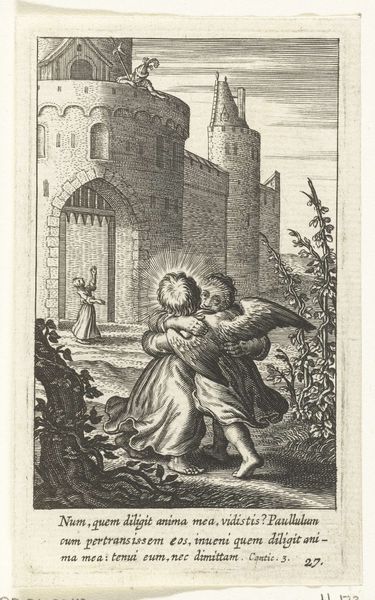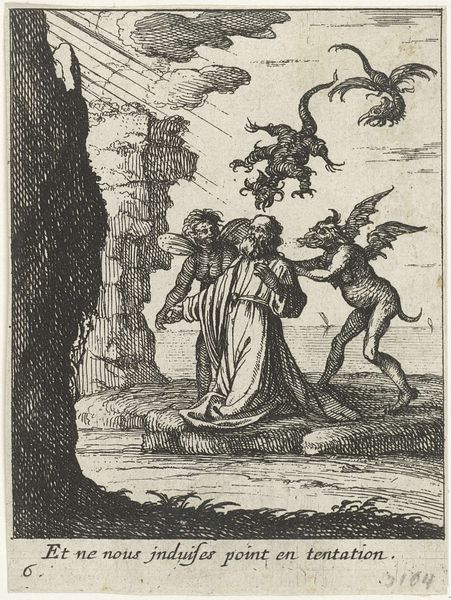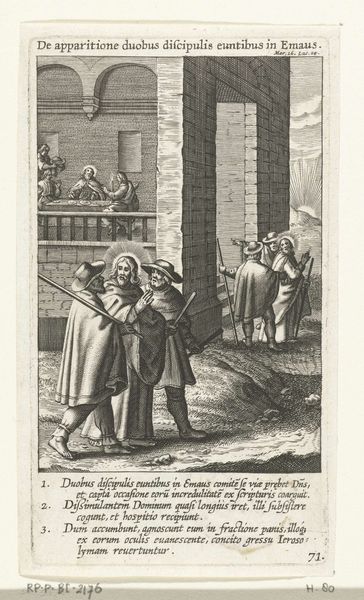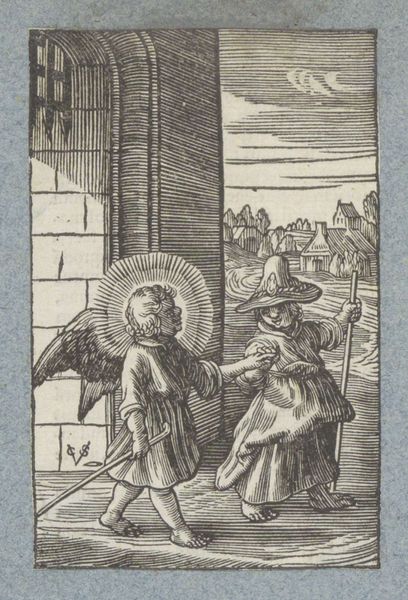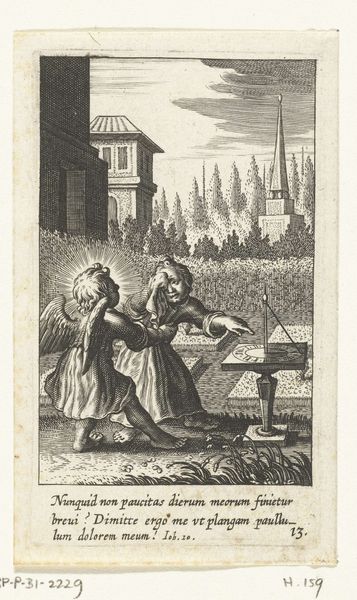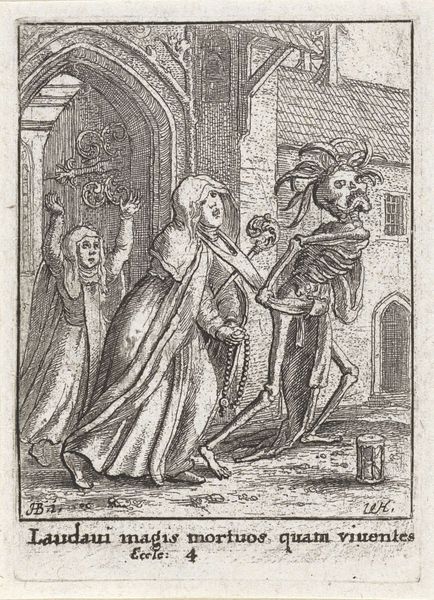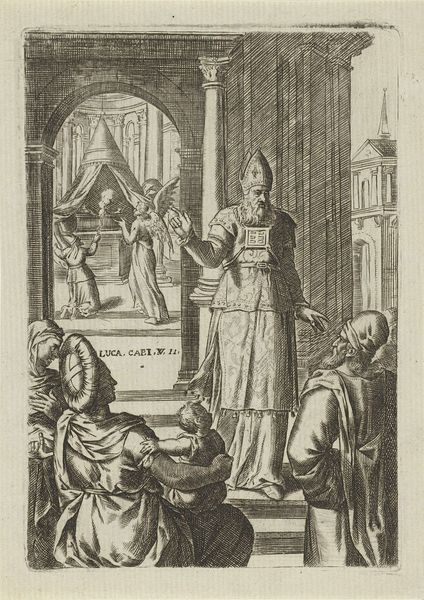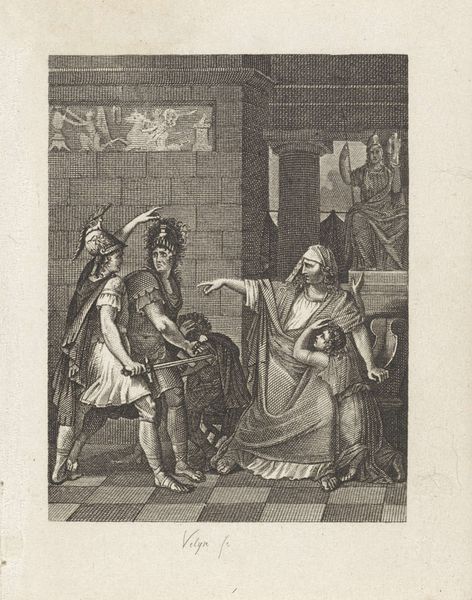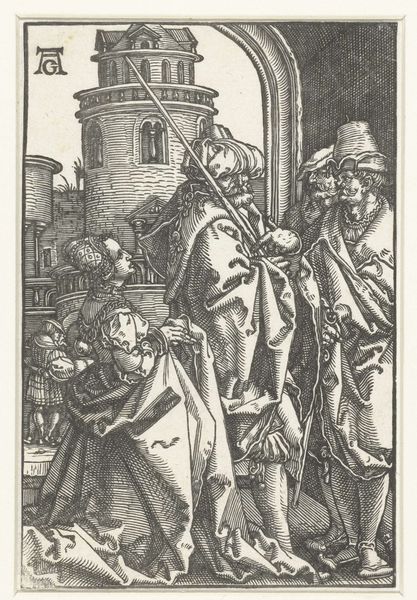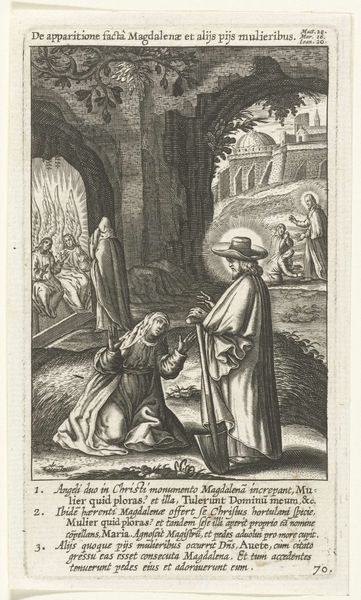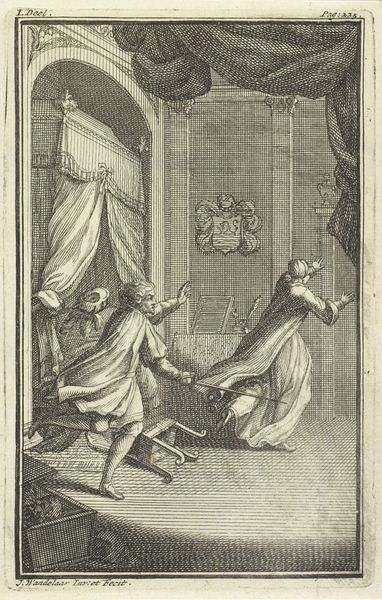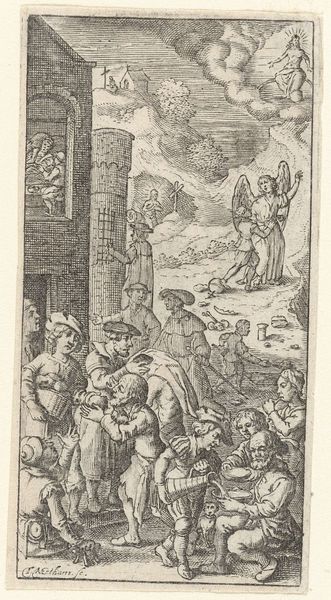
Engel neemt kind gekleed als pelgrim bij de hand 1590 - 1624
0:00
0:00
print, engraving
#
narrative-art
#
baroque
# print
#
figuration
#
engraving
Dimensions: height 95 mm, width 56 mm
Copyright: Rijks Museum: Open Domain
Curator: Today we’re looking at "Engel neemt kind gekleed als pelgrim bij de hand" or "Angel Leading a Child Dressed as a Pilgrim," a print dating from 1590 to 1624, currently held in the Rijksmuseum. Editor: It's small, and finely worked, this little engraving, isn’t it? There's a real sense of contrast; darkness against light. I'm immediately drawn to the material elements: the heavy stone versus the soft clothes of the figures, and how the engraver achieved this difference. Curator: Yes, that contrast is so central. Considering the broader context, pilgrimage at the time had profound spiritual and political resonance. The child pilgrim can be seen as a vulnerable soul guided by a divine presence, a journey mirroring broader social anxieties of the period concerning religious persecution and displacement. Editor: Right, the figure’s journey. Is there something about this print relating back to production? How was this figure supported? Whose labour produced the pilgrimage clothing, staff and bag, what materials, from which lands and the production processes in workshops needed for Bolswert’s work. The angel, likewise: are we really able to look at such material, as the product and consumption of ideas which are realised, but also obscured. Curator: Definitely. This interplay reflects a growing humanist perspective – situating the individual, albeit a child, within a structured cosmos guided by faith. There is the question to whom does this refer: could it stand for Protestant flight from the Netherlands? Are the clothing designs drawn from local designs and styles of clothing, which might indicate some deeper cultural meaning that touches identity? Editor: Interesting, and it reminds me to refocus attention on its making as an object. Take the cross-hatching: an engraving technique, to translate and create light, to add depth; it makes us think of artisanal labour and then the mechanical reproduction through printing. I'm captivated by this interplay of the physical and the ethereal. Curator: Seeing the journey both as a literal path and a metaphorical journey of faith enriches our understanding, the work reflecting shifts in cultural identities during the Baroque era, in their production, expression, and representation. Editor: Exactly. The journey involves more than one form. It prompts reflections on how the making of art contributes to society and the individual experience. Thank you.
Comments
No comments
Be the first to comment and join the conversation on the ultimate creative platform.
